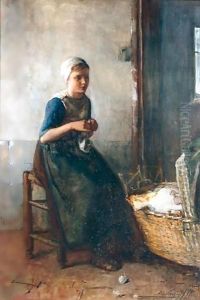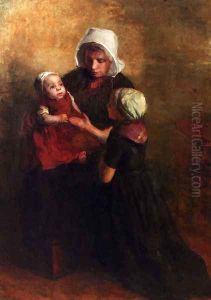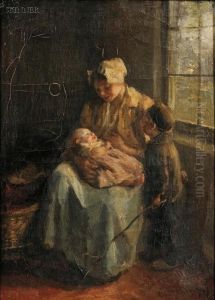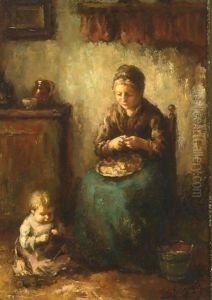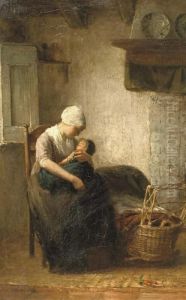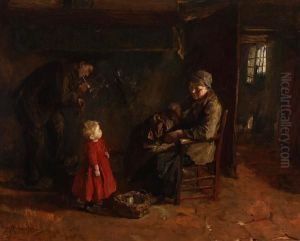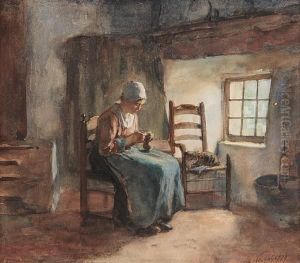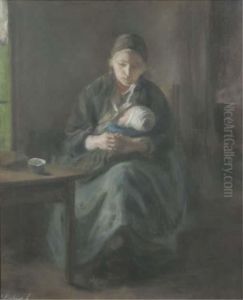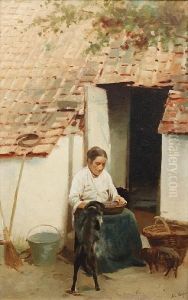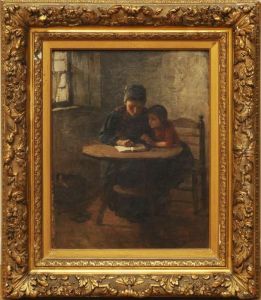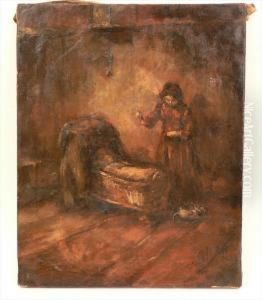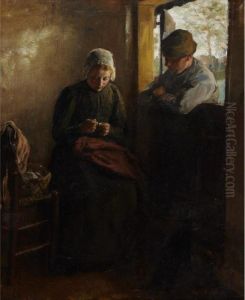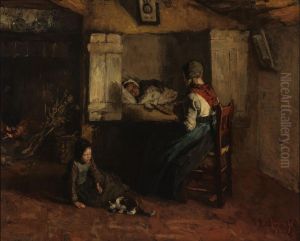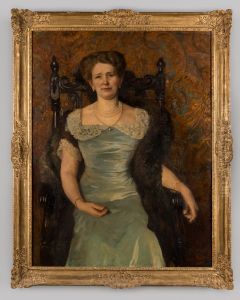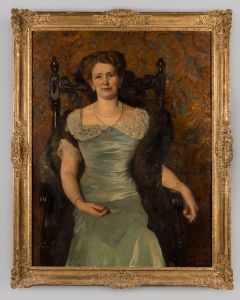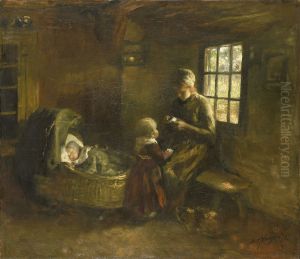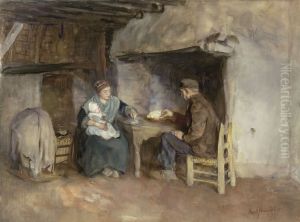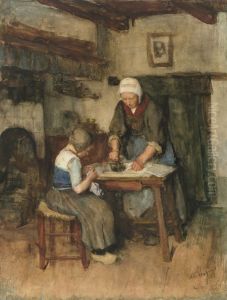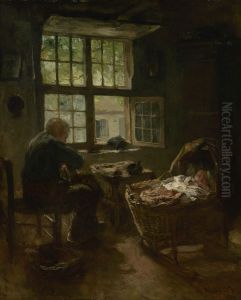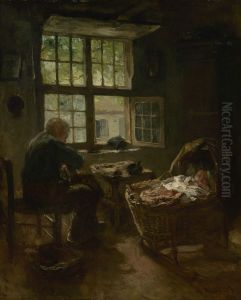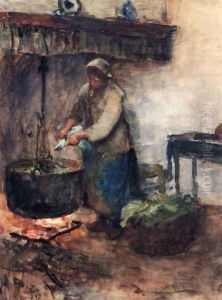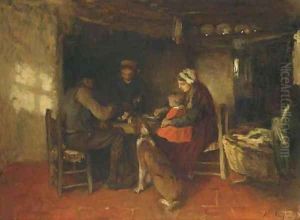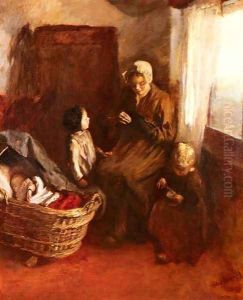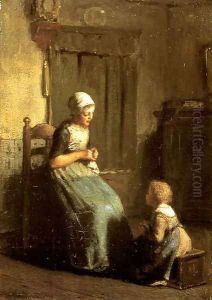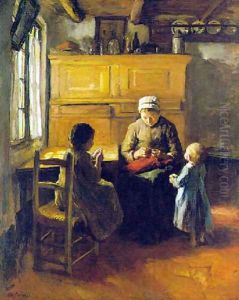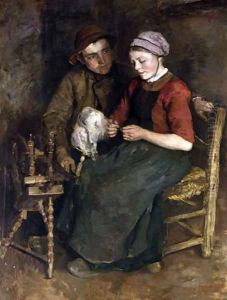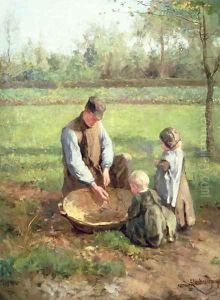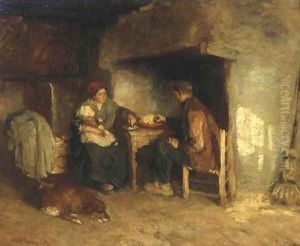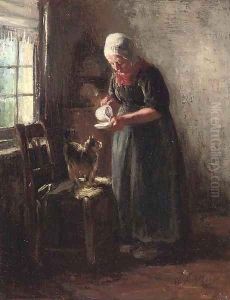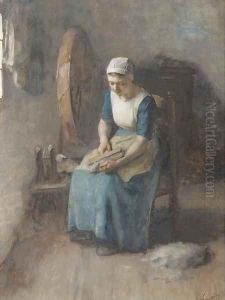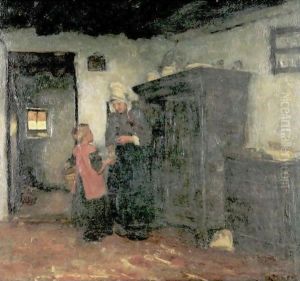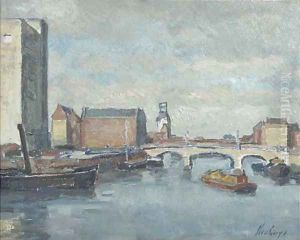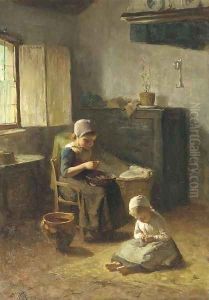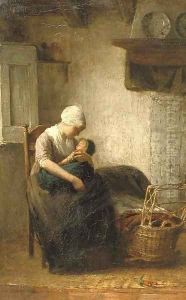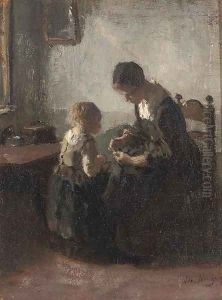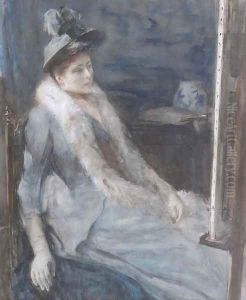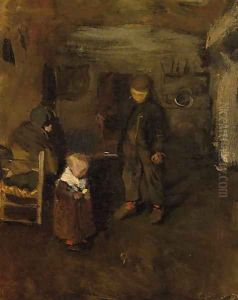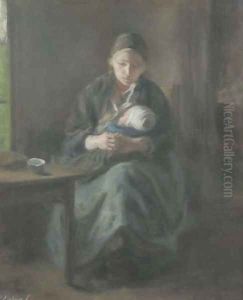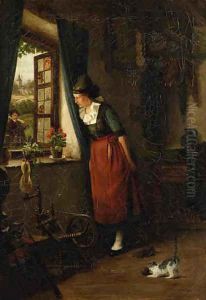Albert Neuhuys Paintings
Johannes Albert Neuhuys, known as Albert Neuhuys, was a Dutch painter, born on June 10, 1844, in Utrecht, the Netherlands. He is often associated with the Hague School of painters, a group of artists who lived and worked in The Hague during the late 19th century and whose works were characterized by a realistic portrayal of Dutch life and landscapes, often with a subtle use of color and light reminiscent of the Dutch masters of the 17th century.
Neuhuys initially trained at the Utrecht School of Art. Early in his career, he painted historical scenes, but he soon shifted his focus to the depiction of rural life. He was particularly fond of illustrating the interiors of peasant cottages, the daily life of villagers, and the innocence of childhood. These scenes were rendered with a tender sentimentality and attention to the effects of light on texture and color.
In 1872, Neuhuys moved to The Hague, where he became influenced by the works of the Hague School artists, such as Jozef Israëls and the Maris brothers. His palette became more subdued, and he started to use a looser brushwork, which was more in line with the aesthetic of the Hague School. Neuhuys was skilled at portraying the play of light in his scenes, particularly the way it filtered through windows to illuminate interiors and figures.
Albert Neuhuys was also part of the Laren School, a group of artists who worked in the village of Laren in North Holland. Laren attracted many artists due to its picturesque countryside and traditional Dutch architecture, which provided a wealth of subject matter for painting. In Laren, Neuhuys continued to develop his distinctive style, which often involved intimate domestic scenes with mothers and children, capturing the warmth and quietude of home life.
Throughout his career, Neuhuys exhibited his work widely, both in the Netherlands and abroad, achieving considerable success. His paintings were appreciated for their charm and the way they evoked a nostalgic view of rural Dutch life. Neuhuys' work also had an impact on the development of Impressionism in the Netherlands, as his approach to light and atmosphere was a forerunner to the techniques used by later Dutch Impressionists.
Albert Neuhuys died on February 6, 1914, in Laren. Today, his paintings can be found in many Dutch museums and collections, where they continue to be celebrated for their beauty and historical significance in Dutch art.
